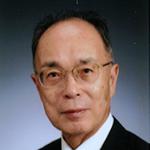
2013 Bower Science Award Theme: Photonic Source Technology
Lasers are ubiquitous in our modern world—printers, pointers, CD/DVD players, scanners, the fiber optic based data networks that bring us the Internet, cable TV, and reliable wireless communications, even the optical computer mouse on our desktops. These are all technologies made possible by extremely small and efficient semiconductor lasers. Kenichi Iga is responsible for one of laser technology's most important breakthroughs: the vertical cavity surface emitting laser, or VCSEL.
Until the perfection of the VCSEL, all semiconductor lasers emitted laser light from their edges. Developing a laser diode that emits light from its surface required overcoming significant scientific and technological challenges with great reward in component manufacturing, practical systems implementations, cost, and improved performance efficiencies. Because of their surface-emitting nature, VCSELs are easier to test during production. Large numbers of VCSELs are manufactured and tested together on a single chip rather than requiring the extra steps of cleaving, as is done with edge emitting lasers. They are also more efficient, requiring less operating current to transmit data at higher speeds than edge emitting lasers. The low divergence of a VCSEL's laser beam from its large emitting surface and its near-circular shape makes it ideal for high-speed optical data communication over fiber optics both in communication networks and in large parallel processed server farms used in various search engines and sophisticated numerical modeling tools.
The VCSEL is the product of a long evolution and experimental process that Kenichi Iga began nearly 40 years ago. Born in Japan, Iga was educated at the Tokyo Institute of Technology, where he spent most of his career. He first proposed the concept of a surface emitting laser in 1977, but the journey from concept to practical reality proved challenging. Iga's dedicated work provided the solid foundation for today's generation of advanced VCSELs for various applications. Because researchers who have followed him have built upon that foundation so successfully, Iga is often considered not merely the "father" of the VCSEL, but the "grandfather," recognizing the overwhelming importance and primacy of his pioneering work. In addition to the VCSEL, Iga was largely responsible for establishing the field of micro-optics, designing lenses, lens arrays, and waveguides used in various common devices such as digital cameras and camera phones. Outside the laboratory, Iga has made major contributions to the culture and advancement of the scientific world. Even after his retirement from a longtime faculty position at Tokyo Institute of Technology, he became executive director of the Japan Society for the Promotion of Science, in which he funded vital research projects and promoted international scientific collaborations. In 2007 he returned to Tokyo Tech as its president, a position he held until October 2012.
As our civilization become ever more dependent on the data networks that form the technological nervous system of 21st century, Kenichi Iga's ingenious development of the VCSEL and its importance in optoelectronics will undoubtedly be recognized as a seminal achievement that has opened up new potential for many applications even yet to be implemented.
Information as of April 2013

